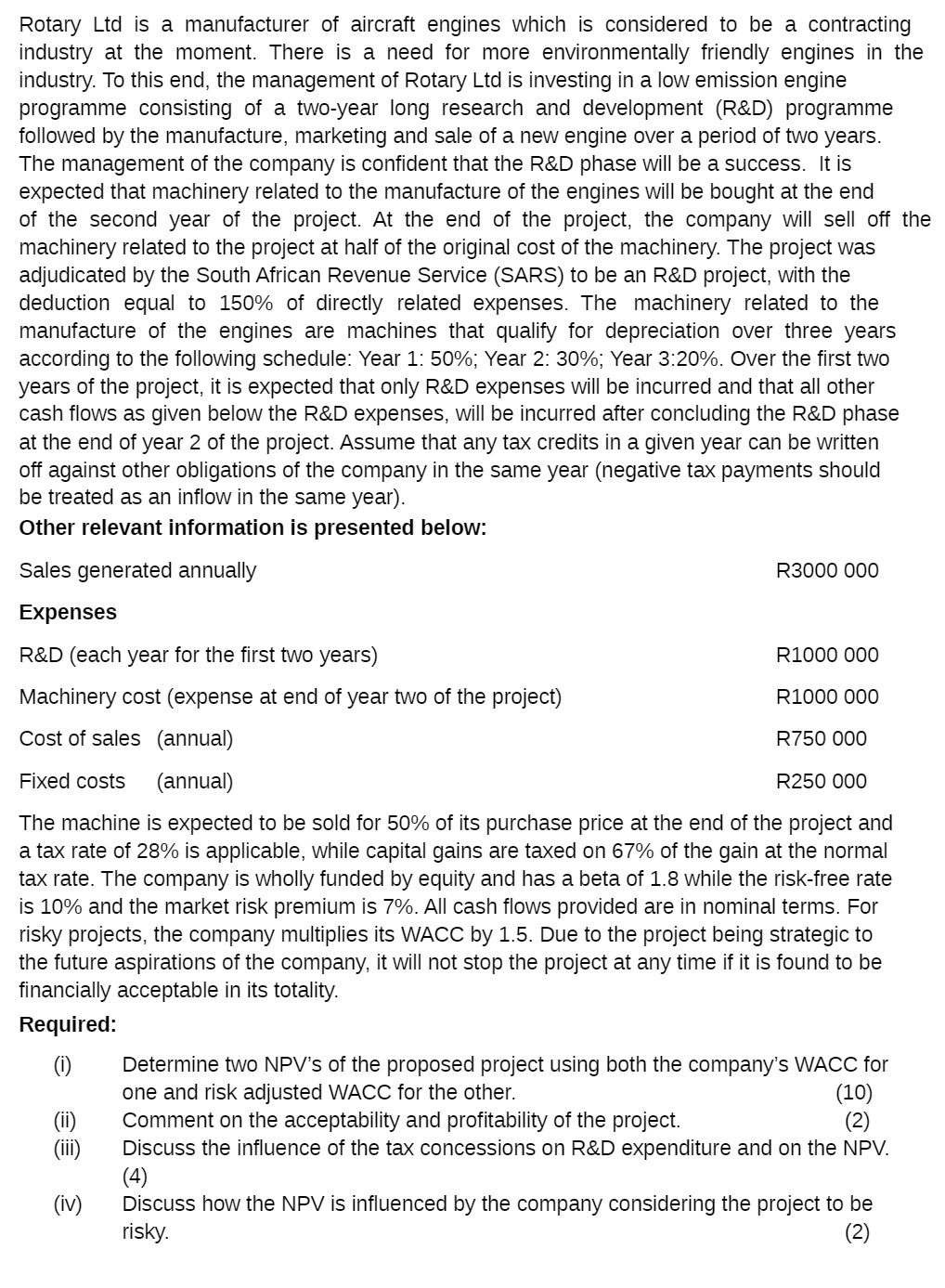Answered step by step
Verified Expert Solution
Question
1 Approved Answer
Rotary Ltd is a manufacturer of aircraft engines which is considered to be a contracting industry at the moment. There is a need for

Rotary Ltd is a manufacturer of aircraft engines which is considered to be a contracting industry at the moment. There is a need for more environmentally friendly engines in the industry. To this end, the management of Rotary Ltd is investing in a low emission engine programme consisting of a two-year long research and development (R&D) programme followed by the manufacture, marketing and sale of a new engine over a period of two years. The management of the company is confident that the R&D phase will be a success. It is expected that machinery related to the manufacture of the engines will be bought at the end of the second year of the project. At the end of the project, the company will sell off the machinery related to the project at half of the original cost of the machinery. The project was adjudicated by the South African Revenue Service (SARS) to be an R&D project, with the deduction equal to 150% of directly related expenses. The machinery related to the manufacture of the engines are machines that qualify for depreciation over three years according to the following schedule: Year 1: 50%; Year 2: 30%; Year 3:20%. Over the first two years of the project, it is expected that only R&D expenses will be incurred and that all other cash flows as given below the R&D expenses, will be incurred after concluding the R&D phase at the end of year 2 of the project. Assume that any tax credits in a given year can be written off against other obligations of the company in the same year (negative tax payments should be treated as an inflow in the same year). Other relevant information is presented below: Sales generated annually Expenses R&D (each year for the first two years) Machinery cost (expense at end of year two of the project) Cost of sales (annual) R750 000 Fixed costs (annual) R250 000 The machine is expected to be sold for 50% of its purchase price at the end of the project and a tax rate of 28% is applicable, while capital gains are taxed on 67% of the gain at the normal tax rate. The company is wholly funded by equity and has a beta of 1.8 while the risk-free rate is 10% and the market risk premium is 7%. All cash flows provided are in nominal terms. For risky projects, the company multiplies its WACC by 1.5. Due to the project being strategic to the future aspirations of the company, it will not stop the project at any time if it is found to be financially acceptable in its totality. Required: R3000 000 R1000 000 R1000 000 (1) Determine two NPV's of the proposed project using both the company's WACC for one and risk adjusted WACC for the other. (10) Comment on the acceptability and profitability of the project. (2) Discuss the influence of the tax concessions on R&D expenditure and on the NPV. (4) (iv) Discuss how the NPV is influenced by the company considering the project to be risky. (2)
Step by Step Solution
There are 3 Steps involved in it
Step: 1
NPV Analysis of Rotary Ltds Low Emission Engine Project Assumptions Project duration 4 years 2 years RD 2 years production Discount rate for NPV calcu...
Get Instant Access to Expert-Tailored Solutions
See step-by-step solutions with expert insights and AI powered tools for academic success
Step: 2

Step: 3

Ace Your Homework with AI
Get the answers you need in no time with our AI-driven, step-by-step assistance
Get Started


